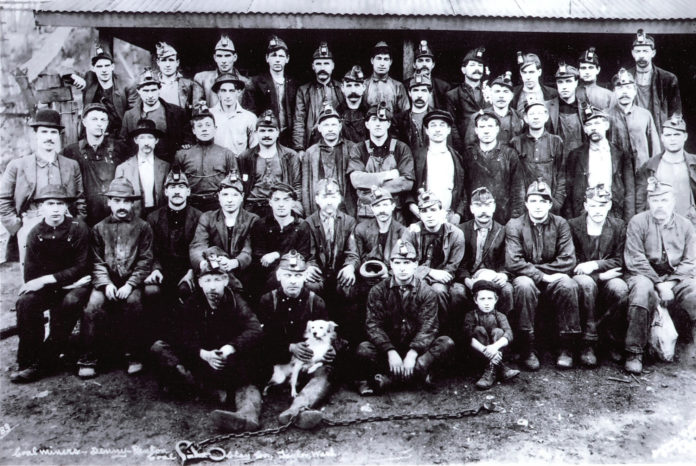The most favorable conditions for the development of coal beds occur when accumulation of plant debris form in relatively permanent bodies of water or in moist shallow swamps. The plant debris undergoes chemical disintegration partly by weathering and partly by the action of bacteria and fungi.
Together with restrictions of air and increasing pressure caused by overlaying layers of sedimentary materials a process begins whereby plant tissue becomes carbonized first to peat, then lignite, bituminous coal, anthracite coal, and finally to graphite. Geologist have estimated that it requires at least 6,000 years to form one-foot of coal or about 30,000 years to create a five-foot seam.
Added to this are long periods of time for accumulation of hundreds of feet of overlying sand, shale and interbedded rock. In the Puget Sound area the coal beds stretching from Newcastle to Wilkeson and including those in Black Diamond, Ravensdale, and Taylor were created some 34 to 56 million years ago. Given 18 distinct coal seams in the Franklin series of the Puget Group that supposes 18 significant periods of climatic change over millions of years. More recently, 10,000-14,000 years ago glaciers from the last ice age began melting and filling low areas with glacially deposited gravels, in some places hundreds of feet deep. It is unlikely that coal miners at the Denny-Renton Coal & Clay Company in Taylor, Washington knew much geologic history when donning their work clothes and open flame lamps to descend each day into the bowels of the earth.
The coal they mined powered the clay and brick-making processes in the town of Taylor located about four miles east of Hobart. The town is long gone and now a part of the Seattle City watershed. This image was likely taken sometime after 1905 when the Denny-Renton Coal & Clay Company assumed operations of the mining site from their predecessor, Denny Clay Company.
This photo # 86-92.3 comes courtesy of the Maple Valley Historical Society, while research this caption was informed by a 1923 paper on coal by A. Elmer Anderson, a fire-boss at the Newcastle mines, who tragically died in an underground coal mining accident the following year.







